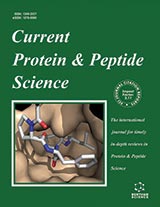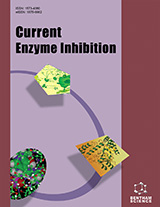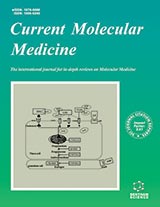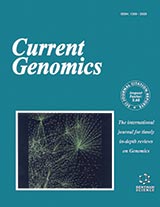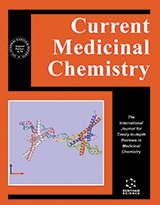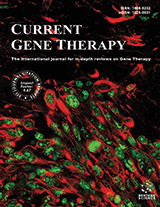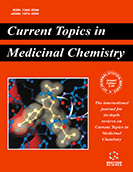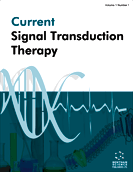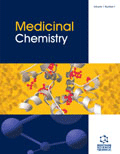Abstract
High-temperature-requirement A2 (HtrA2)/Omi/PARK13 is a serine protease with extensive homology to the Escherichia coli HtrAs that are required for bacterial survival at high temperatures. The HtrA2 protein is a key modulator of mitochondrial molecular quality control but under stressful conditions it is released into the cytosol, where it promotes cell death by various pathways, including caspase-dependent pathway and ER stress-mediated apoptosis. Recently, the HtrA2 protein has received great attention for its potential role in neurodegeneration. Here, we review the current knowledge and pathophysiological functions of the HtrA2 protein in neurodegenerative disorders such as Parkinson’s and Alzheimer’s disease.
Keywords: Alzheimer's disease, apoptosis, HtrA2, HtrA2 interacting proteins, mitochondria, Parkinson’s disease, protein quality control.
Current Protein & Peptide Science
Title:Pathogenic Role of Serine Protease HtrA2/Omi in Neurodegenerative Diseases
Volume: 18 Issue: 7
Author(s): Hui-Gwan Goo, Hyangshuk Rhim and Seongman Kang*
Affiliation:
- Division of Life Sciences, Korea University, 1, 5ka, Anam-dong, Sungbuk-gu, Seoul 136-701,Korea
Keywords: Alzheimer's disease, apoptosis, HtrA2, HtrA2 interacting proteins, mitochondria, Parkinson’s disease, protein quality control.
Abstract: High-temperature-requirement A2 (HtrA2)/Omi/PARK13 is a serine protease with extensive homology to the Escherichia coli HtrAs that are required for bacterial survival at high temperatures. The HtrA2 protein is a key modulator of mitochondrial molecular quality control but under stressful conditions it is released into the cytosol, where it promotes cell death by various pathways, including caspase-dependent pathway and ER stress-mediated apoptosis. Recently, the HtrA2 protein has received great attention for its potential role in neurodegeneration. Here, we review the current knowledge and pathophysiological functions of the HtrA2 protein in neurodegenerative disorders such as Parkinson’s and Alzheimer’s disease.
Export Options
About this article
Cite this article as:
Goo Hui-Gwan, Rhim Hyangshuk and Kang Seongman*, Pathogenic Role of Serine Protease HtrA2/Omi in Neurodegenerative Diseases, Current Protein & Peptide Science 2017; 18 (7) . https://dx.doi.org/10.2174/1389203717666160311115750
| DOI https://dx.doi.org/10.2174/1389203717666160311115750 |
Print ISSN 1389-2037 |
| Publisher Name Bentham Science Publisher |
Online ISSN 1875-5550 |
Call for Papers in Thematic Issues
Advancements in Proteomic and Peptidomic Approaches in Cancer Immunotherapy: Unveiling the Immune Microenvironment
The scope of this thematic issue centers on the integration of proteomic and peptidomic technologies into the field of cancer immunotherapy, with a particular emphasis on exploring the tumor immune microenvironment. This issue aims to gather contributions that illustrate the application of these advanced methodologies in unveiling the complex interplay ...read more
Artificial Intelligence for Protein Research
Protein research, essential for understanding biological processes and creating therapeutics, faces challenges due to the intricate nature of protein structures and functions. Traditional methods are limited in exploring the vast protein sequence space efficiently. Artificial intelligence (AI) and machine learning (ML) offer promising solutions by improving predictions and speeding up ...read more
Nutrition and Metabolism in Musculoskeletal Diseases
The musculoskeletal system consists mainly of cartilage, bone, muscles, tendons, connective tissue and ligaments. Balanced metabolism is of vital importance for the homeostasis of the musculoskeletal system. A series of musculoskeletal diseases (for example, sarcopenia, osteoporosis) are resulted from the dysregulated metabolism of the musculoskeletal system. Furthermore, metabolic diseases (such ...read more
Protein Folding, Aggregation and Liquid-Liquid Phase Separation
Protein folding, misfolding and aggregation remain one of the main problems of interdisciplinary science not only because many questions are still open, but also because they are important from the point of view of practical application. Protein aggregation and formation of fibrillar structures, for example, is a hallmark of a ...read more
Related Journals
 84
84 7
7
- Author Guidelines
- Graphical Abstracts
- Fabricating and Stating False Information
- Research Misconduct
- Post Publication Discussions and Corrections
- Publishing Ethics and Rectitude
- Increase Visibility of Your Article
- Archiving Policies
- Peer Review Workflow
- Order Your Article Before Print
- Promote Your Article
- Manuscript Transfer Facility
- Editorial Policies
- Allegations from Whistleblowers
Related Articles
-
Potential Therapeutic Interest of Adenosine A2A Receptors in Psychiatric Disorders
Current Pharmaceutical Design Potential Implications of Angiotensin-converting Enzyme 2 Blockades on Neuroinflammation in SARS-CoV-2 Infection
Current Drug Targets Recent Developments of Flavonoids with Various Activities
Current Topics in Medicinal Chemistry NMDA Receptor Antagonists as Antidepressant and Antidementia Drugs: Recent Developments and Future Prospects
Current Medicinal Chemistry - Central Nervous System Agents A Critical Sojourn of Hyaluronic Acid-based Hydrogels in the Wound Healing Process: Current Advances and Future Prospects
Current Drug Therapy Fungal Bioactive Compounds in Pharmaceutical Research and Development
Current Bioactive Compounds Nanocapsulated Ascorbic Acid in Combating Cerebral Ischemia Reperfusion- Induced Oxidative Injury in Rat Brain
Current Alzheimer Research TAU Aggregation is a Therapeutic Target for Alzheimers Disease
Current Alzheimer Research Withdrawn: Mesenchymal Stem Cell-derived Exosomes for Treatment of Ischemic Stroke
Current Stem Cell Research & Therapy Intracellular Aβ and its Pathological Role in Alzheimer’s Disease: Lessons from Cellular to Animal Models
Current Alzheimer Research Inhibitory Effect of Ebselen on Cerebral Acetylcholinesterase Activity In Vitro: Kinetics and Reversibility of Inhibition
Current Pharmaceutical Design Nuclear Factor Kappa-light-chain-enhancer of Activated B Cells (NF-κB) – a Friend, a Foe, or a Bystander - in the Neurodegenerative Cascade and Pathogenesis of Alzheimer's Disease
CNS & Neurological Disorders - Drug Targets C-Abl Inhibition; A Novel Therapeutic Target for Parkinson's Disease
CNS & Neurological Disorders - Drug Targets Structural Properties of the NMDA Receptor and the Design of Neuroprotective Therapies
Mini-Reviews in Medicinal Chemistry The Glutathione System and its Regulation by Neurohormone Melatonin in the Central Nervous System
Central Nervous System Agents in Medicinal Chemistry Possibility of Non-Immunosuppressive Immunophilin Ligands as Potential Therapeutic Agents for Parkinsons Disease
Current Pharmaceutical Design Effect of PSEN1 mutations on MAPT methylation in early-onset Alzheimer’s disease
Current Alzheimer Research Vascular Dementia: Atherosclerosis, Cognition and Alzheimers Disease
Current Alzheimer Research Bioactive Loaded Lipid-based Nanostructures: A Novel Insight for Age-related Neurodegeneration
Current Molecular Medicine Editorial [Hot Topic: Therapeutic Potential of Peptide Motifs - Part II (Executive Editor: Jean-Claude Herve)]
Current Pharmaceutical Design


